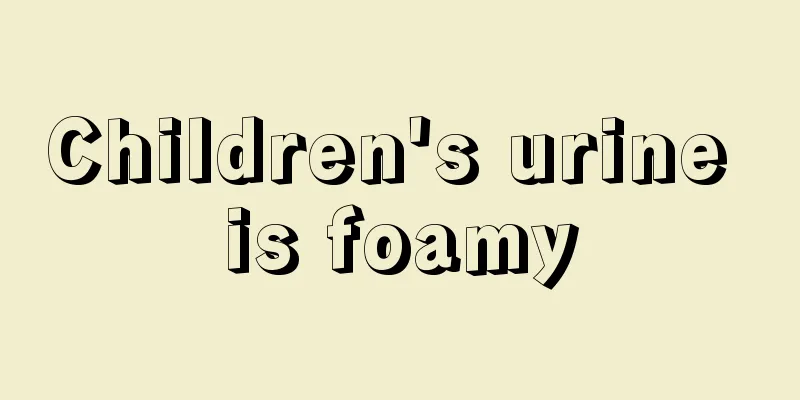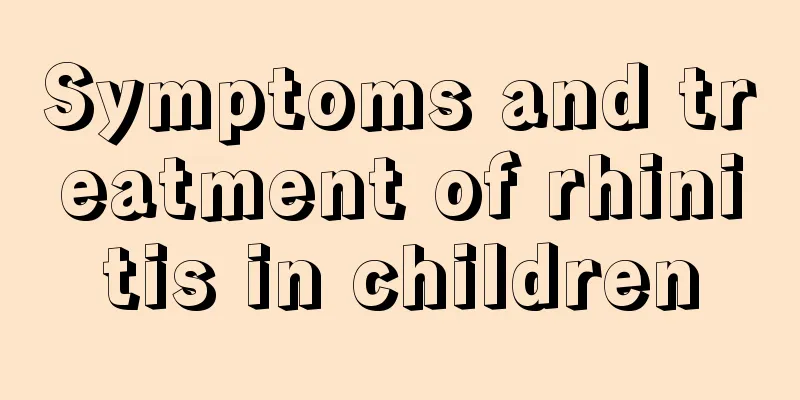What are the clinical manifestations of infantile head hematoma?

|
Many children have swollen heads after birth, which is mainly caused by head hematoma. From the literal meaning, we can understand that head hematoma is caused by local bleeding in the head, or comprehensive bleeding and edema are very serious. Let's take a look at the clinical manifestations of baby's head hematoma. 1.Cranial hematoma Cephalic hematoma is also called subperiosteal hematoma. The hematoma is located in the parietal bone or posterior parietal bone, often in one or both parietal bones. It is occasionally seen in patients with cephalic hematoma on both sides. It is also occasionally seen in patients with hematoma in the frontal bone, occipital bone and temporal bone at the same time. Due to the slow formation of subperiosteal bleeding, the hematoma is usually not obvious until a few hours or 2 to 3 days after birth, reaches the maximum range within 1 week, and then gradually absorbed and reduced. The boundary of the hematoma is clear and does not cross the bone joints. There is a sense of fluctuation, and the skin color of the local affected area does not change. In some children, the skin color of the local hematoma is red. At the beginning, the middle part of the hematoma is tense, and then the top of the hematoma shows fluctuation. The hematoma of the head is absorbed slowly, and it can disappear in about 2 weeks to 3 months depending on the size. During absorption, the surrounding base periosteum becomes hard and uneven due to the presence of lime salt. A raised ossified hard edge is first formed at the edge of the hematoma, and the central depression changes into a crater-like shape. There is exudate in the hematoma, and the absorption time varies depending on the size of the hematoma, ranging from 3 to 4 months at the longest to about 2 months at the shortest. Hard and uneven edges can also gradually disappear, but it takes longer. Sometimes blood flows through fractures or cracks in the skull and forms an intracranial hematoma between the skull and the parietal meninges. This type of hematoma is smaller in size, but can occasionally compress the brain and cause brain symptoms. In some children, the hematoma on the head is so large that it affects the eyelids and forehead. The children appear pale and in shock, and may die of sudden circulatory failure. Cephalohematoma may be aggravated by a decrease in the concentrations of coagulation factors II, VII, IX, and X. 2. Subgaleal hematoma Localized swelling and bleeding of the scalp are seen shortly after birth, which can spread through the soft tissue. When the amount of bleeding is small, the range of the hematoma is relatively limited; when the amount of bleeding is large, the range of swelling gradually expands, and may involve the entire scalp and even the forehead, occipital area around the eyes, or the back of the neck. The hematoma has a fluctuating feeling, often making it difficult to palpate the anterior fontanelle, and the overlying skin may appear bluish purple. Severe bleeding can cause anemia or hypovolemic shock, which may cause death if not treated in time. The above are two clinical manifestations. If you find that your child also has the above conditions, you should go to the hospital for treatment in time. The body structure of babies is different from that of adults. Because they are in constant development and children are a vulnerable group, they rely entirely on the observation of their parents. For babies, parents should observe the baby's physical condition every day to create a healthier physical atmosphere. |
>>: Diet therapy to prevent hand, foot and mouth disease
Recommend
Can children eat taro when they are young?
Many people don't know what to feed their chi...
How can children improve their physical fitness?
Children are growing up and have poor resistance....
What causes myocarditis in children?
Pediatric myocarditis is often caused by viral in...
What medicine should children take to clear away heat and reduce fire
For children, clearing away heat and reducing fir...
10 characteristics of children with low IQ, these abnormal manifestations
Nowadays, many children have intellectual disabil...
Is the Qingrezhike oral liquid effective for children?
Children's Qingrezhike Oral Liquid is a relat...
What is normal vision for children? Experts introduce authoritative answers
When a baby is just born, his vision is usually r...
Treatment of diarrhea in infants under one month old
I believe we have all seen cases of diarrhea in b...
What's the matter with the hard lump on the baby's arm after the injection?
The health of the baby is a very important matter...
How to carry out early education for babies?
This is the best time for babies to learn and acc...
What are the symptoms and treatments for children with intestinal spasms?
Intestinal spasms in children are actually a comm...
What to do if a three-year-old baby has a cold and stuffy nose
Nasal congestion will make the patient very uncom...
What should I do if my child hits his chin and has a protrusion on the bone?
Because children are naturally active, it is inev...
What does eczema look like on a baby's face? Must-read knowledge for mothers
Sometimes, small spots as big as rice grains will...
How to use medicine for children’s vulvar itching?
When we were young, few parents could truly care ...









